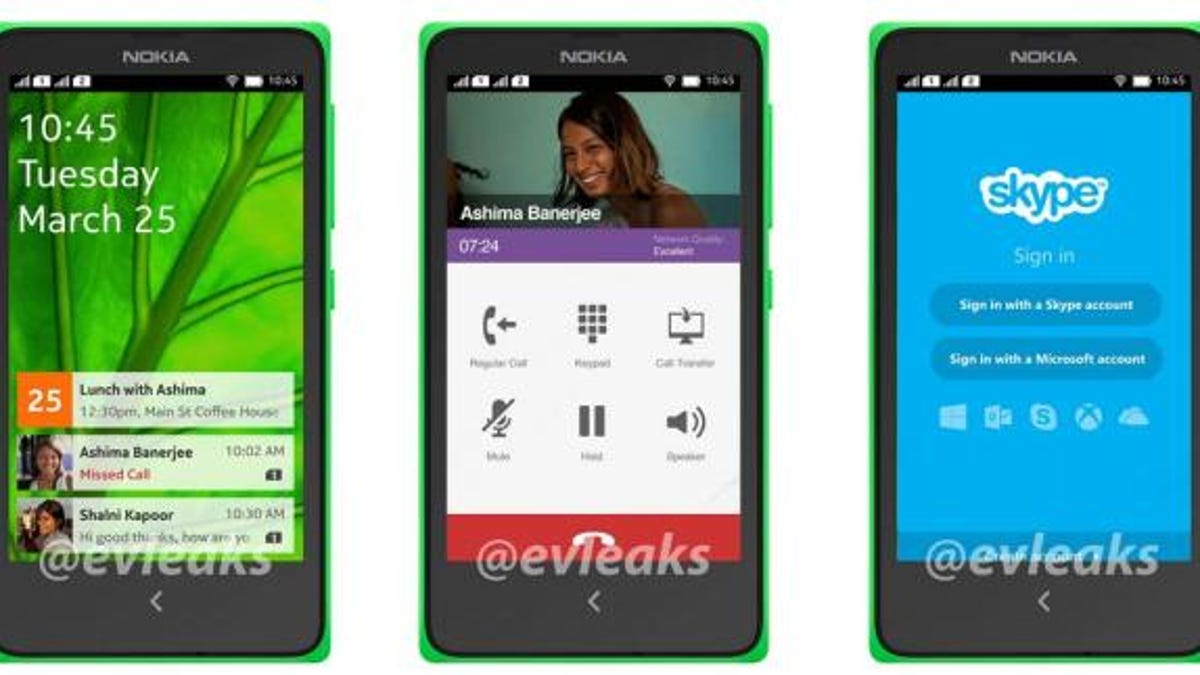Nokia's low-end Android phone expected later this month
The long-rumored smartphone for developing markets is expected to make its debut at the Mobile World Congress trade show in Barcelona.

Nokia will introduce a new low-end handset that uses Google's Android mobile operating system later this month in Barcelona at the Mobile World Congress trade show, according to a report on Monday from The Wall Street Journal.
Nokia has been rumored for months to be working on a device that uses the open source Android operating system. The phone, which is aimed at developing markets, will be a low-end, inexpensive device. According to various news reports, the device will not be able to access the Google Play application store. Instead, it will run services created by Nokia and Microsoft, including Here maps and Mix Radio. Nokia will offer its own application store for the phone that will offer access to popular Android apps, such as Skype, Facebook, Twitter, and many others.
The device code-named Normandy, may go by the name Nokia X, when it's released. According to reports, the phone will offer a dual-core 1GHz Snapdragon processor, a 4-inch WVGA screen, 512MB of memory, 4GB of storage, and a microSD card slot. It's expected to be available in a choice of six colors, and it will reportedly include a 5MP camera, a 1,500mAh battery, and a dual-SIM setup.
Nokia is scheduled to hold a press conference in Barcelona at the MWC trade show on Monday, February 24. It's believed the phone will be shown off at this event, according to the Journal.
Addressing the low-end smartphone market
The strategy to use the Android operating system is similar to how Amazon has used the OS for its Kindle tablet, the Kindle Fire. Amazon also used the open source software as a basis for its device, but it does not provide access to the Google Play store or many of the made for Google Android apps that are available.
According to several reports, this is the same way that Nokia will use Android for its new low-end phones.
Three years ago Nokia abandoned its home-grown smartphone OS, called Symbian, in favor of using Microsoft's Windows Phone operating system. The company uses this software in its Lumia product line, which has a mix of high-end, mid-range, and even some low-end devices. Nokia has seen modest success with Windows Phone and the Lumia brand.
Last year, Microsoft agreed to buy Nokia's devices and services business for $7.4 billion. The deal is expected to close within the first half of this year.
Even though Nokia has used Windows Phone exclusively for its high-end smartphones, the company has used a different OS to address many developing markets, such as India. The company has developed a separate product line called Asha, which replaces its old Series 40 devices. The devices use a homegrown OS that looks similar to the now retired Symbian operating system.
But Nokia has struggled to compete at the low-end of the market against competitors using the open source Android operating system. Even though Nokia has developed some lower-cost Lumia handsets that use the Windows Phone operating system, it's not the most cost-effective solution for this market. The reason why is that the Windows Phone software has more technical requirements that adds cost to hardware.
Meanwhile, Google's Android can operate on less expensive hardware. This has helped make Android the dominant OS on smartphones shipped to developing markets. Now, Nokia appears to be turning to the lower-cost Android operating system to help it compete more effectively in these markets.
In these low-end markets, scale is key. Chipmakers, such as Qualcomm and MediaTek, already offer easier and cheaper reference designs for Android smartphones. These reference programs provide a one-stop shop for device manufacturers that includes tools and resources for quickly getting inexpensive devices to market.
Nokia was supposedly already working on its Android smartphone before it inked its deal with Microsoft in September. But the fact that the program has gotten as far as it has, may speak to Microsoft's willingness to be pragmatic in the handset market. Google is Microsoft's chief competitor in almost every facet of its business.

